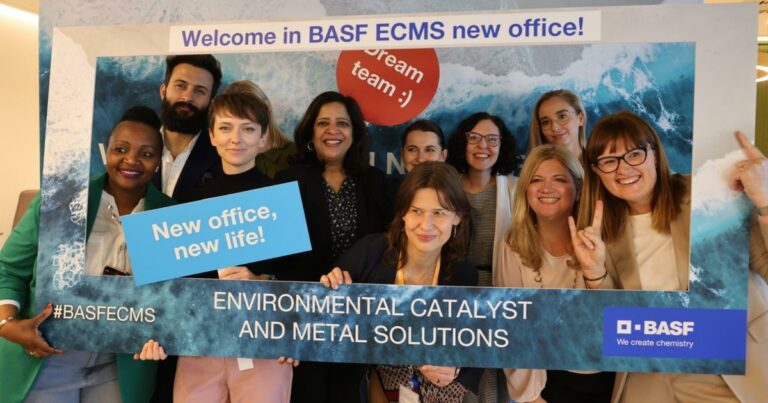Foreign workers express satisfaction
Minimum wage in Poland set to increase again in 2025
According to a survey by Grupa Progres, 26% of foreign workers express a desire to earn between 3,000 PLN and 3,900 PLN net. However, expectations differ among Ukrainian workers, who set a higher minimum threshold of 4,000 PLN net.
In 2025, employees earning Poland’s minimum wage can expect larger pay raises than originally anticipated. Under a new government regulation, starting in January, the gross minimum wage will rise to 4,666 PLN (approximately 3,510.92 PLN net), while the minimum hourly rate will increase to 30.50 PLN. These changes have been welcomed by many foreign workers from Asia, Africa, and South America currently employed in Poland, as well as those who have gone through recruitment and legal residency processes and are planning to work in the country. According to a survey by Grupa Progres, 26% of foreign workers express a desire to earn between 3,000 PLN and 3,900 PLN net. However, expectations differ among Ukrainian workers, who set a higher minimum threshold of 4,000 PLN net.
Positive impact for over 3 million workers, including foreigners
This wage increase will positively impact more than 3 million individuals, including many foreign workers who often start their jobs in Poland at the lowest wage levels. Workers and candidates from other continents, especially those arriving for employment, tend to have modest financial expectations, particularly in the beginning. In the survey, 26% of respondents stated they aim to earn between 3,000 PLN and 3,900 PLN net in Poland. Nearly half (48%) hope to earn between 4,000 PLN and 7,700 PLN net, while 26% expect salaries exceeding 7,700 PLN.
The situation is slightly different for Ukrainians. Only 5% of them would agree to wages below 4,000 PLN net, while 85% expect between 4,000 PLN and 7,700 PLN net, and 10% aspire to earn more than 7,700 PLN net.
Employers face challenges as minimum wage increases
While the raise is good news for employees, it poses challenges for employers. Meeting employees’ expectations may lead to increased costs for businesses, which could be passed on to consumers through higher prices for goods and services or a decline in quality if companies choose not to pass these costs on to customers.
One possible solution to help employers cope could be the introduction of a regionally or sector-specific minimum wage, taking into account the varying costs of doing business in different areas. Scandinavian countries, such as Sweden, negotiate wages with industry unions, which could provide an alternative model for setting wage standards.
Government decision on minimum wage increase
The Social Dialogue Council, comprised of representatives from employers, trade unions, and the government, had proposed increasing the minimum wage to 4,626 PLN gross and the hourly rate to 30.20 PLN. However, a lack of agreement led the government to make the final decision, resulting in a minimum wage that will be 53.83% of the average gross salary, which currently stands at 8,673 PLN. For comparison, the current minimum wage is 4,300 PLN gross, or approximately 3,261.53 PLN net, with an hourly rate of 28.10 PLN.
“The new regulations will affect over 3 million people employed at minimum wage levels, who will see real wage growth. This will also benefit foreign workers, who often start at the lowest pay scale. For many newcomers from Asia, Africa, or South America, this starting amount is satisfactory, as they couldn’t expect such wages in their home countries,” says Cezary Maciołek, CEO of Grupa Progres. “Ukrainians, the largest group of migrant workers, have higher expectations due to their strong position among employers. Workers from other, more distant regions are still in the early stages of building such positions, although more are arriving in Poland, and the openness to hiring them is gradually increasing.”
Increased legalization of foreign employment
In the first half of 2024 alone, the majority of employment legalizations were for citizens of countries using notification procedures or simplified employment declarations. This includes primarily Ukraine (588,884), Belarus (96,985), Georgia (42,328), the Philippines (20,513), Nepal (19,635), Moldova (19,632), India (18,730), Colombia (16,830), Uzbekistan (14,224), and Bangladesh (11,371).
Grupa Progres’ survey indicates that many workers from other continents seeking employment in Poland have moderate financial expectations, with 26% aiming to earn between 3,000 PLN and 3,900 PLN net, and nearly half (48%) expecting between 4,000 PLN and 7,700 PLN net. Higher salaries, exceeding 7,700 PLN net, are desired by 26% of respondents. The figures for Ukrainian workers are slightly different, with only 5% willing to accept less than 4,000 PLN net, 85% expecting 4,000–7,700 PLN net, and 10% seeking more than 7,700 PLN net. However, reality doesn’t always align with these expectations; 69% of Ukrainians working temporarily in Poland currently earn between 3,300 PLN and 5,500 PLN net.
A manageable increase for employers?
“The minimum wage increase to 4,666 PLN from January 2025 may seem modest compared to the hikes in 2023 and 2024, and not too burdensome for employers. However, when we consider the base amount from which this increase stems, it is already quite high for many companies. Moreover, the increase of several hundred PLN could place additional wage pressure on employers. If they wish to retain staff and meet their financial expectations, these costs will likely fall on consumers, resulting in higher prices or lower product and service quality if companies choose not to pass on these costs,” explains Maciołek. “It’s worth considering whether the minimum wage should be uniform across the country or regionally or sectorally differentiated, considering the different costs of doing business.”
Regional and sectoral wage differences
According to Poland’s Central Statistical Office (GUS), the highest wages in the first half of the year were recorded in the Mazowieckie province (115.4% of the national average), while the lowest were in the Warmińsko-Mazurskie province (17.3% below the national average). Other regions with higher-than-average wages included Dolnośląskie, Małopolskie, Pomorskie, and Śląskie. In contrast, provinces like Podkarpackie, Podlaskie, Lubelskie, and Świętokrzyskie saw wages 15% below the national average.
In terms of industry, the highest average gross monthly salaries were seen in the information and communication sector (13,232 PLN), followed by real estate (8,266 PLN), industry (8,158 PLN), business enterprises (8,145 PLN), and construction (7,839 PLN). Other sectors such as manufacturing, transportation, and trade also reported lower but still significant average wages.
As Poland’s labor market continues to evolve, the upcoming wage increases will play a crucial role in shaping both employment dynamics and the broader economic landscape.







